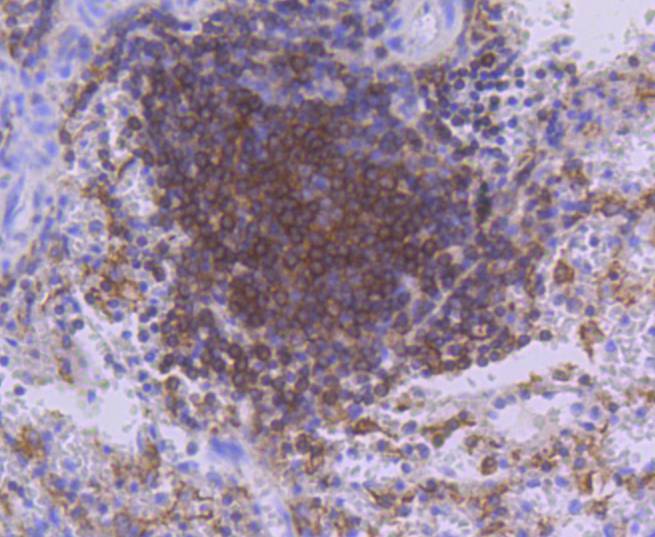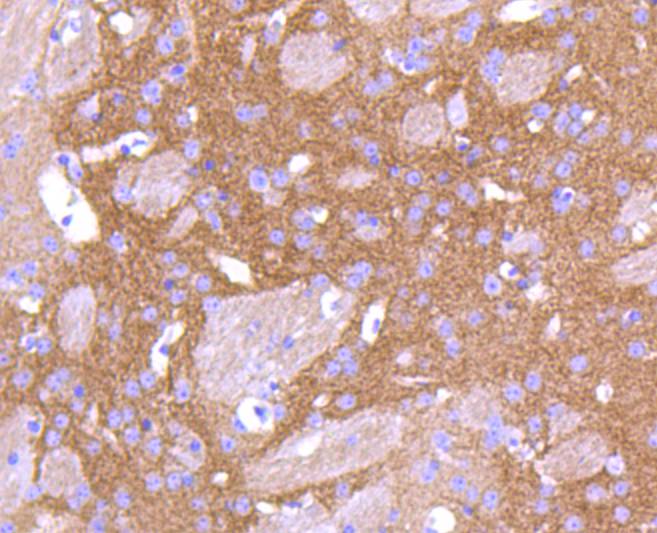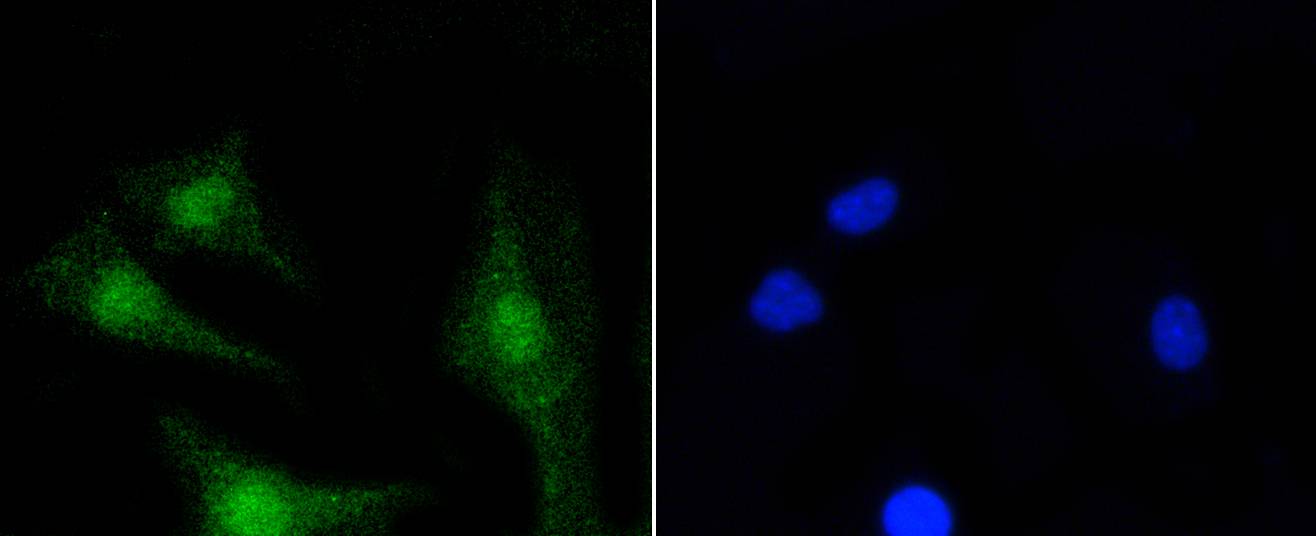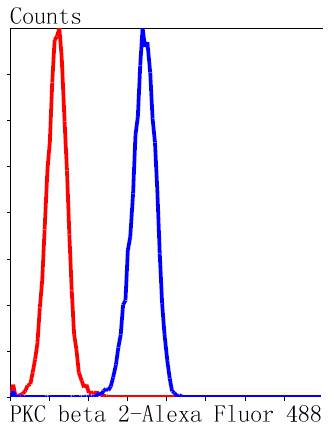Product Detail
Product NamePKC beta 2 Rabbit mAb
Clone No.ST48-06
Host SpeciesRecombinant Rabbit
Clonality Monoclonal
PurificationProA affinity purified
ApplicationsWB, ICC/IF, IHC, IP, FC
Species ReactivityHu, Ms, Rt
Immunogen Descrecombinant protein
ConjugateUnconjugated
Other NamesKPCB_HUMAN antibody
PKC Beta antibody
PKC-B antibody
PKC-beta antibody
PKCB antibody
Prkcb antibody
PRKCB II antibody
PRKCB2 antibody
Protein kinase C beta antibody
Protein kinase C beta type antibody
Accession NoSwiss-Prot#:P05771
Uniprot
P05771
Gene ID
5579;
Calculated MW77 kDa
Formulation1*TBS (pH7.4), 1%BSA, 40%Glycerol. Preservative: 0.05% Sodium Azide.
StorageStore at -20˚C
Application Details
WB: 1:1,000-1:2,000
IHC: 1:50-1:200
ICC: 1:50-1:200
FC: 1:50-1:100
Western blot analysis of PKC beta 2 on Raji cell lysates using anti-PKC beta 2 antibody at 1/1,000 dilution.
Immunohistochemical analysis of paraffin-embedded human spleen tissue using anti-PKC beta 2 antibody. Counter stained with hematoxylin.
Immunohistochemical analysis of paraffin-embedded mouse brain tissue using anti-PKC beta 2 antibody. Counter stained with hematoxylin.
Immunohistochemical analysis of paraffin-embedded mouse spleen tissue using anti-PKC beta 2 antibody. Counter stained with hematoxylin.
ICC staining PKC beta 2 in SH-SY-5Y cells (green). The nuclear counter stain is DAPI (blue). Cells were fixed in paraformaldehyde, permeabilised with 0.25% Triton X100/PBS.
Flow cytometric analysis of Hela cells with PKC beta 2 antibody at 1/50 dilution (blue) compared with an unlabelled control (cells without incubation with primary antibody; red). Alexa Fluor 488-conjugated goat anti rabbit IgG was used as the secondary antibody?
Members of the protein kinase C (PKC) family play a key regulatory role in a variety of cellular functions including cell growth and differentiation, gene expression, hormone secretion and membrane function. PKCs were originally identified as serine/threonine protein kinases whose activity was dependent on calcium and phospholipids. Diacylglycerols (DAG) and tumor promoting phorbol esters bind to and activate PKC. PKCs can be subdivided into at least two major classes including conventional PKC isoforms (α, βI, βII and γ) and novel PKC isoforms. Patterns of expression for each PKC isoform differ among tissues and PKC family members exhibit clear differences in their cofactor dependencies. For instance, the kinase activities of nPKC δ and are independent of Ca2+. On the other hand, nPKC δ and ε, as well as all of the cPKC members, possess phorbol ester-binding activities and kinase activities.
If you have published an article using product 48881, please notify us so that we can cite your literature.








 Yes
Yes



